Obtaining Cross-sections from LXCat
LXCat is an open-access website for collecting, displaying, and downloading electron and ion scattering cross-sections required for modeling low temperature plasmas. The available databases include electron-neutral and ion-neutral scattering cross-sections for various kinds of gases. There are fourteen databases that include around one hundred different materials, such as Hg, Kr, Mg, BF3, C2OH6 and CF4. For each material, cross-sections of ionization, excitation, as well as many other collisional processes are available at the LXCat website and can be used in PIC simulations or Boltzmann solvers. These data can be either plotted or downloaded in text format. The LXCat database can be accessed from the LXCat Website (http://fr.lxcat.net/home/).
Particle collision is an important physical process in simulations of various plasma applications, such as plasma discharges, magnetron sputtering and low temperature plasma processing. Vorpal allows user defined cross-sections. In a simulation of a particular material, user can download the cross-section data for this material from LXCat and use it directly for Monte Carlo interactions in Vorpal.
To add collision processes to VSim, cross-sections data must be supplied by the user. According to the terms of the LXCat database, we are not permitted to distribute data obtained from the database, so the data included as part of various examples is less accurate. The following section provides a set of instructions for obtaining the more accurate cross-section data for yourself.
N.B. in VSim, User’s are limited to using one (1) cross section per file.
Downloading Cross-Sections from LXCat Database
We will use our VSimPD/Processes/Townsend example to walk-through obtaining cross-sections. In our validation study, the cross-sections used in the elastic, excitation, and ionization interactions between the electrons and the background neutral Helium gas were taken from the LXCat Database.
The terms of use of the LXCat database do not allow Tech-X to distribute the cross sections we used in our study which calculated a Townsend coefficient within 10% of accepted value of 1.31. Instead, less accurate estimates of the cross-sections are provided so that the simulation can run.
To obtain a more accurate set of cross-sections from the LXCat Database, follow these instructions:
Open a Browser and follow this (https://fr.lxcat.net/data/set_type.php) link to the database.
From the menu bar on the left, select “Scattering Cross Sections” and press “Next.”
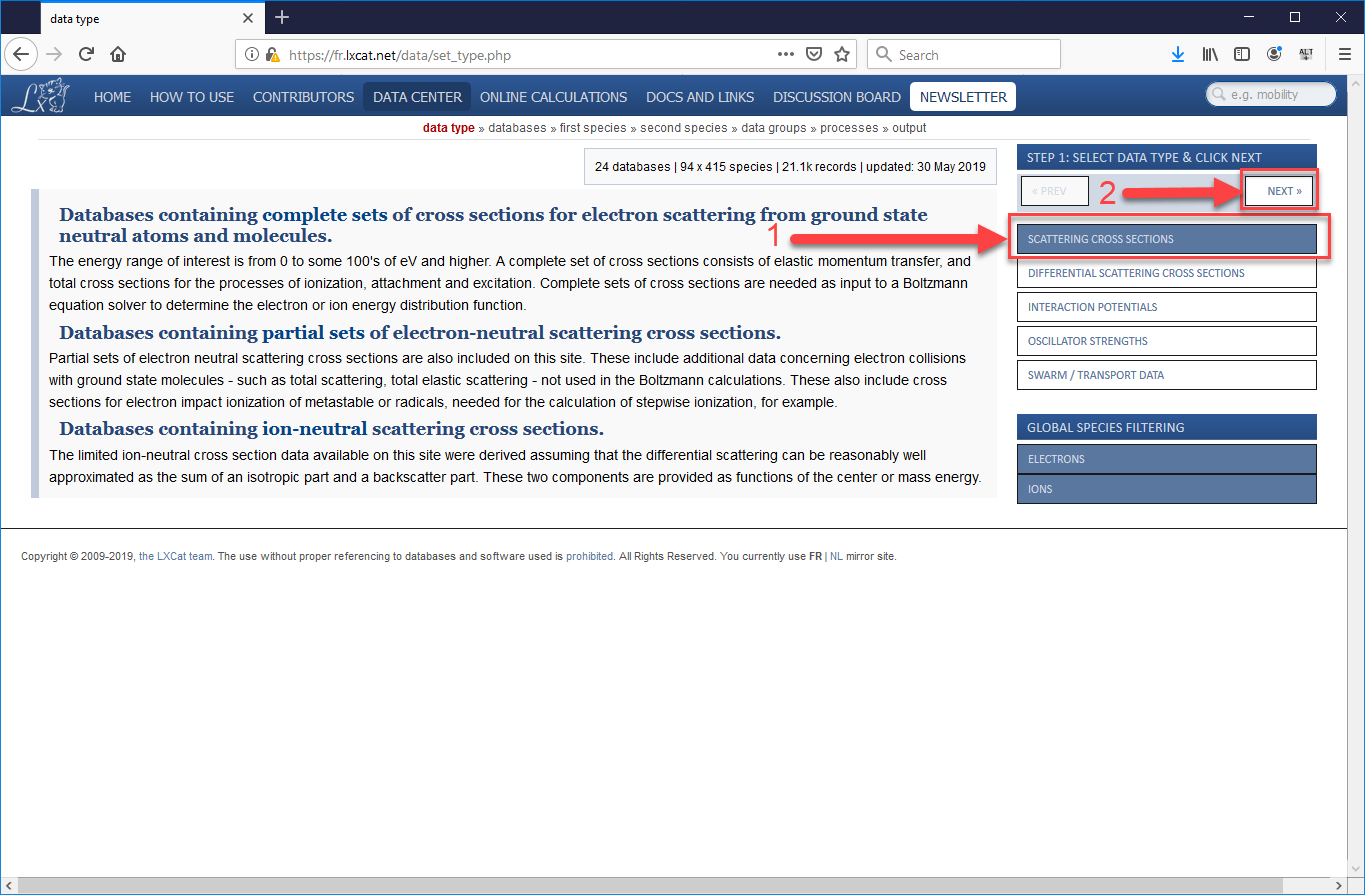
On the next page, first press the “minus” button to de-select all options, then select the “Biagi (transcription of data from SF Biagi’s Fortan code, Magboltz.)” Alternatively, you could choose another sub-database from which to obtain cross-sections, the data from all the sources agree fairly well, but we are taking you to the specific set we used in our validation study. After the sub-database is selected, press “Next”.
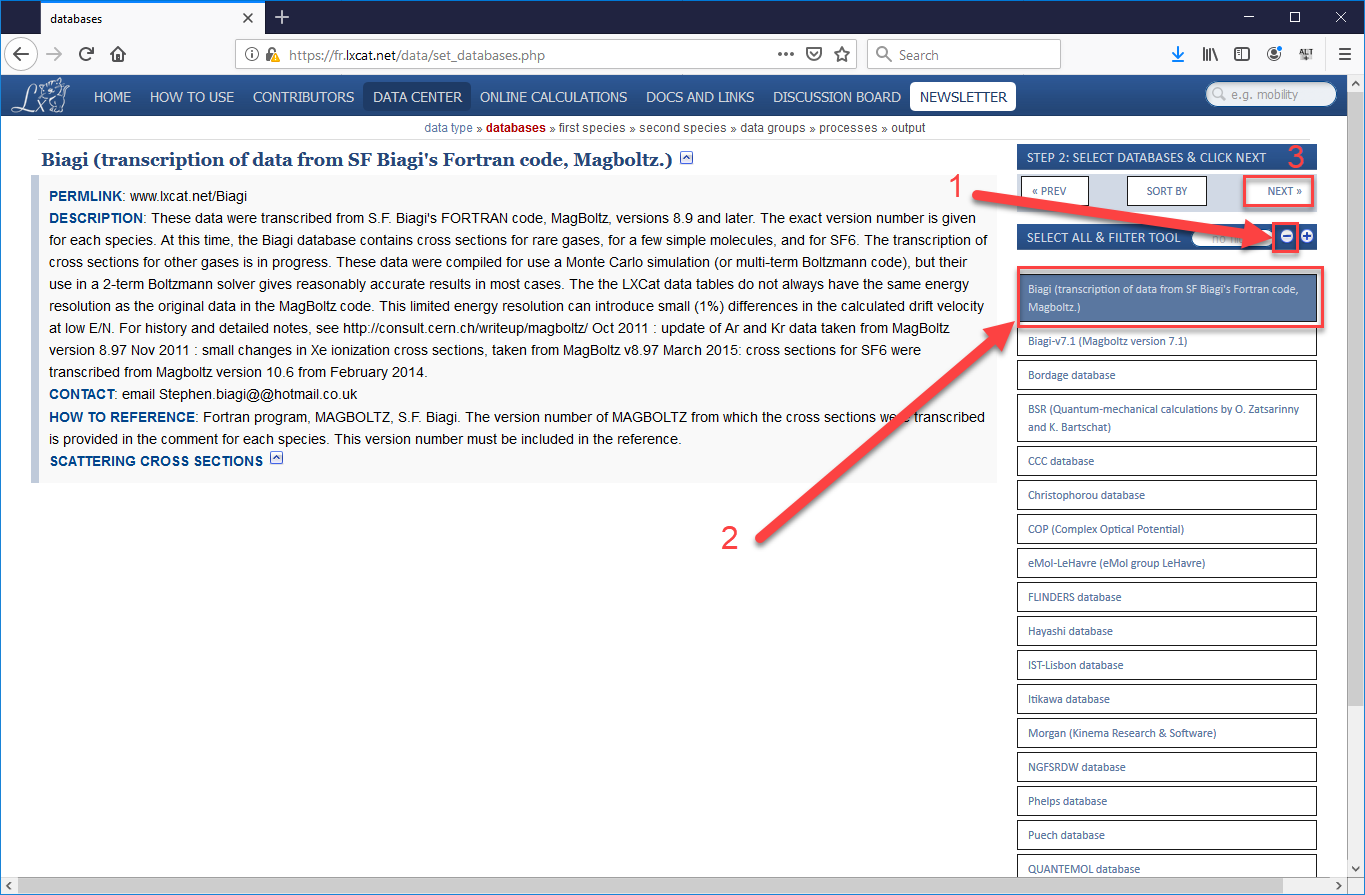
Since we are using the Biagi data, which are all processes which involve electrons, we skip over the choice of first species (since it will be an electron) and go straight to choosing the second species. Choose “He” (or your species of choice), then “Next”.
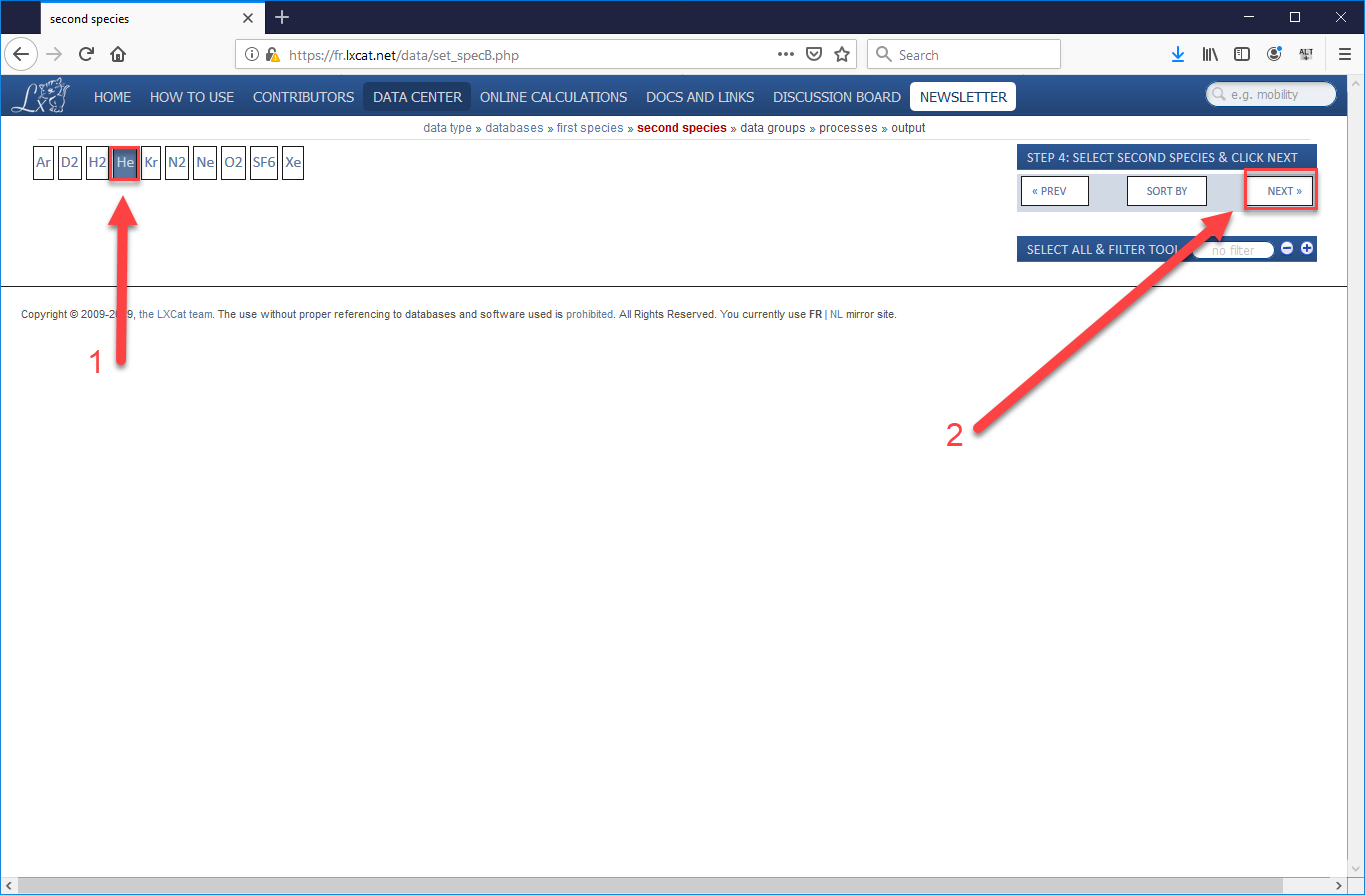
We will be using Elastic Scattering, Excitation, and Ionization processes for this simulation, so select all three options (“Elastic”, “Excitation”, and “Ionization”) the press “Next”.
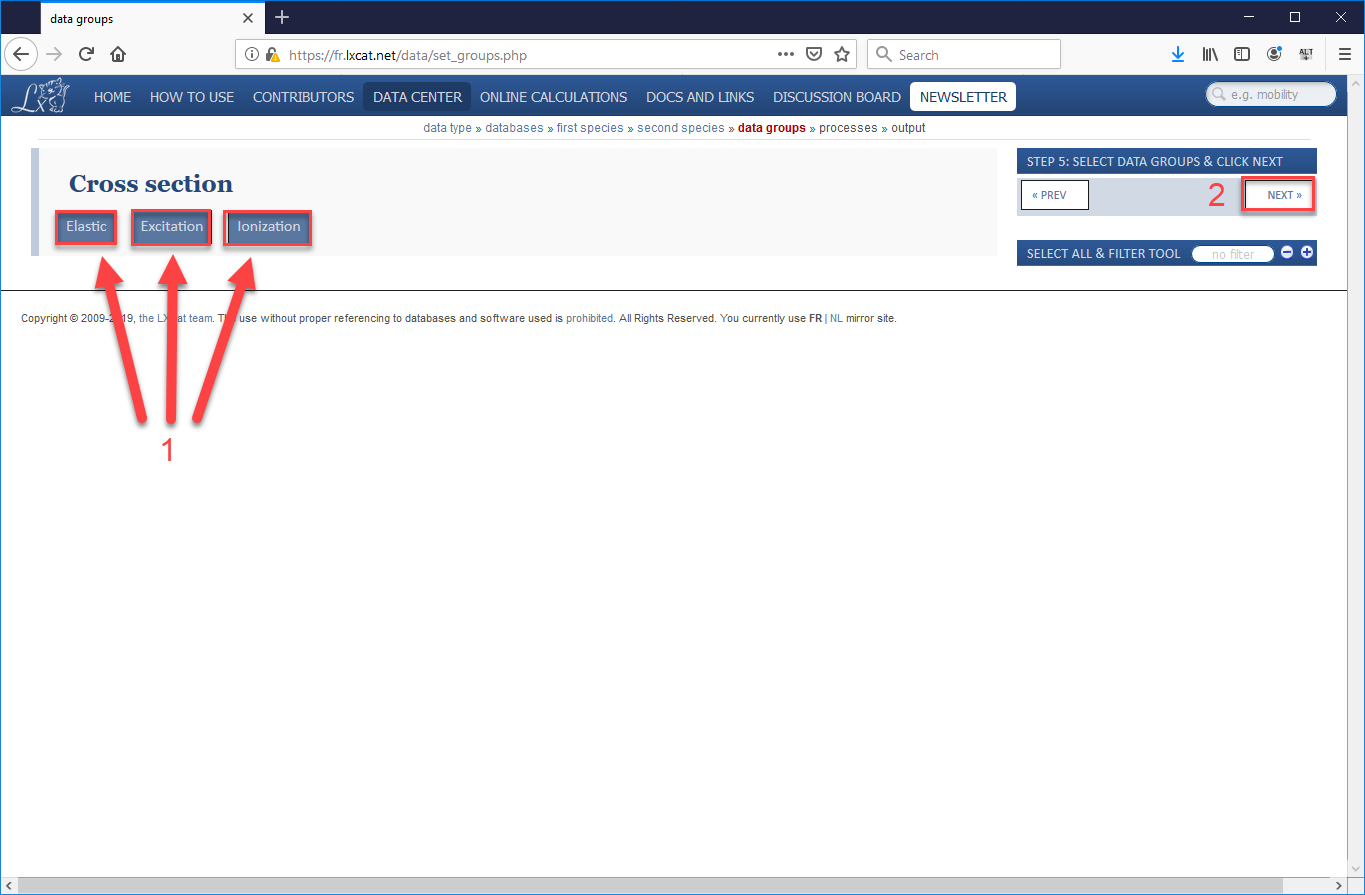
One the next page that opens will be a long list of electron-helium processes, the majority of which will be excitation processes which involve an electron passing energy to a neutral helium atom, sending it into an excited state, which will eventually cause the helium atom to emit a photon (which will not be tracked in VSim) when the atom returns to its ground state. In our validation study, we used the cross-sections for the elastic scattering process, five of the most common excitation processes, and the ionization process. Be sure to check the boxes for all 7 processes, scrolling down to the very bottom to find ionization (as shown in images Fig. 134 and Fig. 135). Then scroll back up and press “Next”.
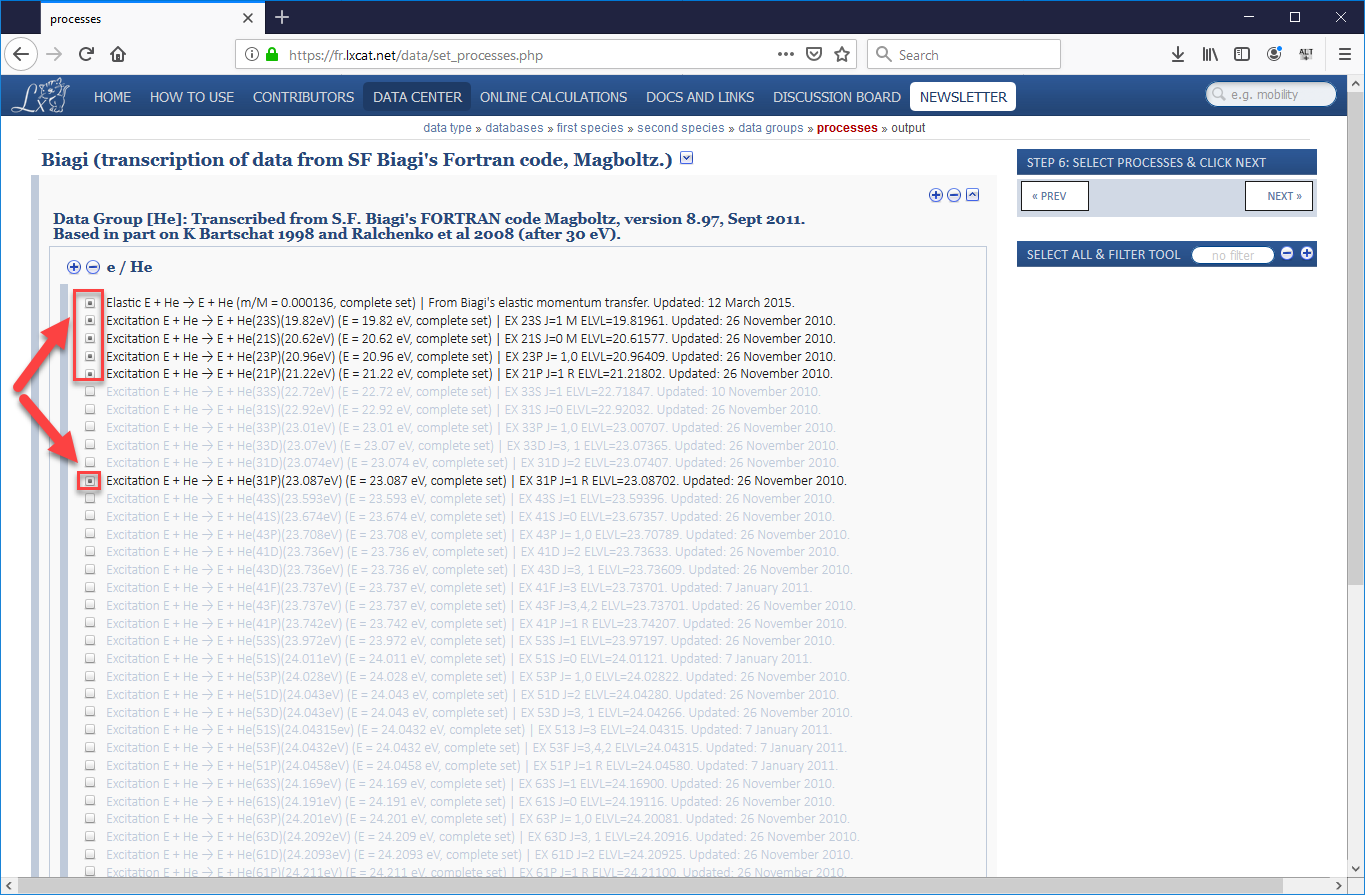
Fig. 134 LXCat Step 6a
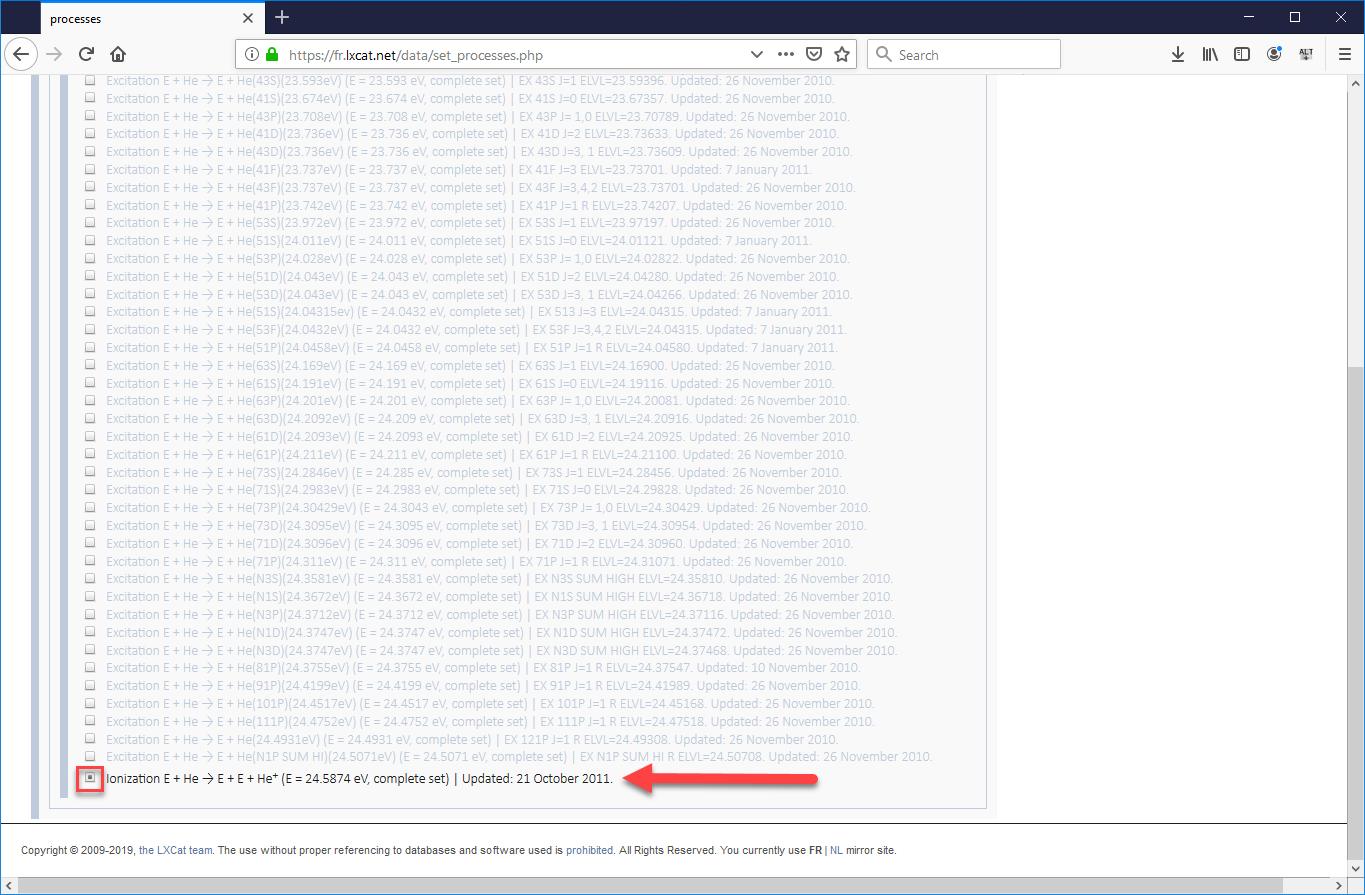
Fig. 135 LXCat Step 6b
This will take you to the Terms of Use page for the LXCat database. All the data in this database represents someone’s original research, and therefore must be appropriately cited when used in further research. Please read this page (it is very short), then press “Yes, I have read and understood >>” to proceed.
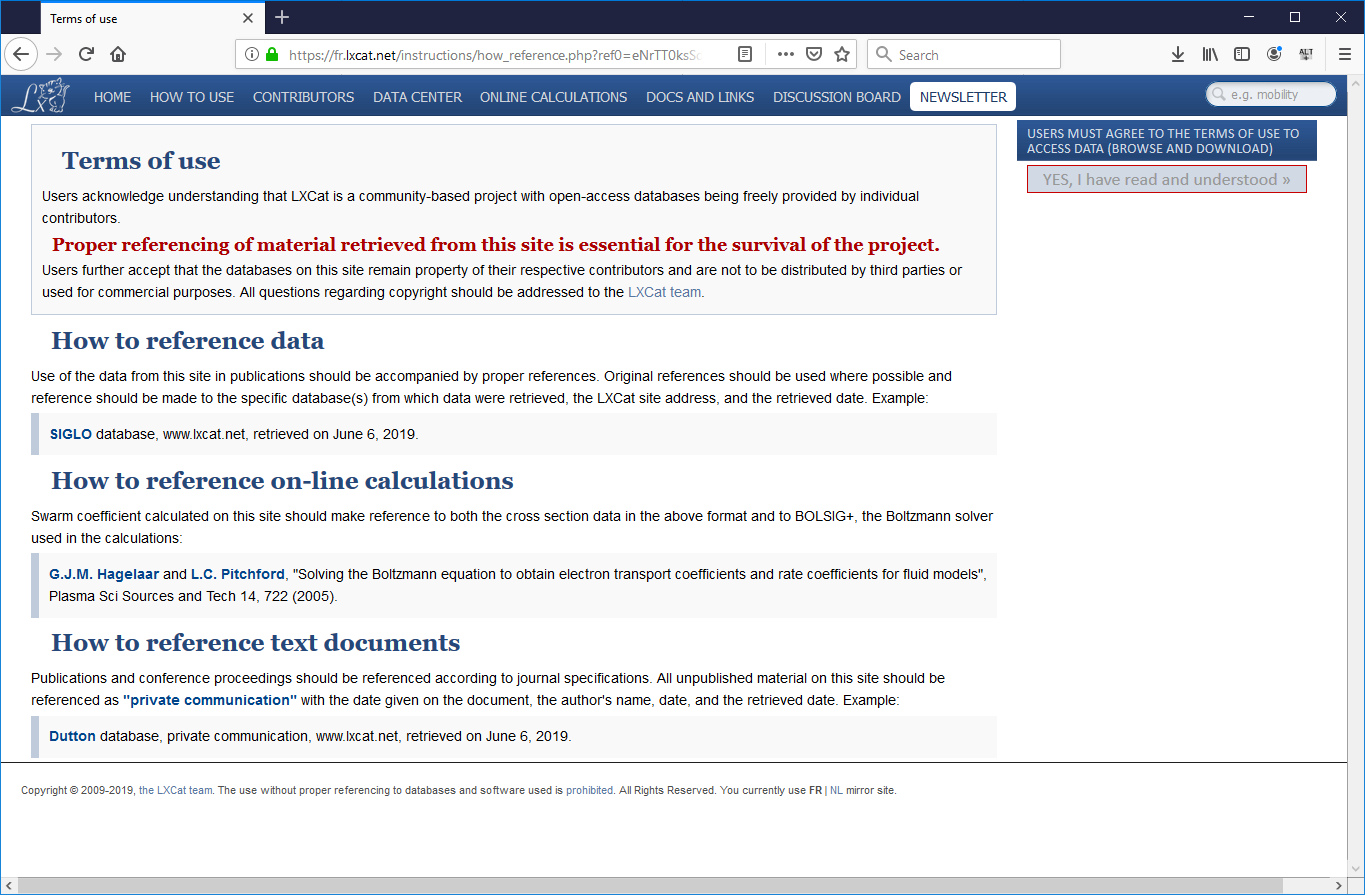
Fig. 136 LXCat Step 7
After agreeing to the terms of use, you will once again be shown the list of cross-sections from which you selected the 7 processes in Step 6. Just press “Next” one final time to retrieve the data.
On the next page there will be a plot showing the cross-section data you selected in Step 6. To use cross-section data in VSim, we need the data in a two-column format. The two columns need to have the CM energy (in eV) in the first column, and the cross section (in square meters) in the second column. To retrieve the data in this form, press the “TXT” text in the upper right corner (see Fig. 136).
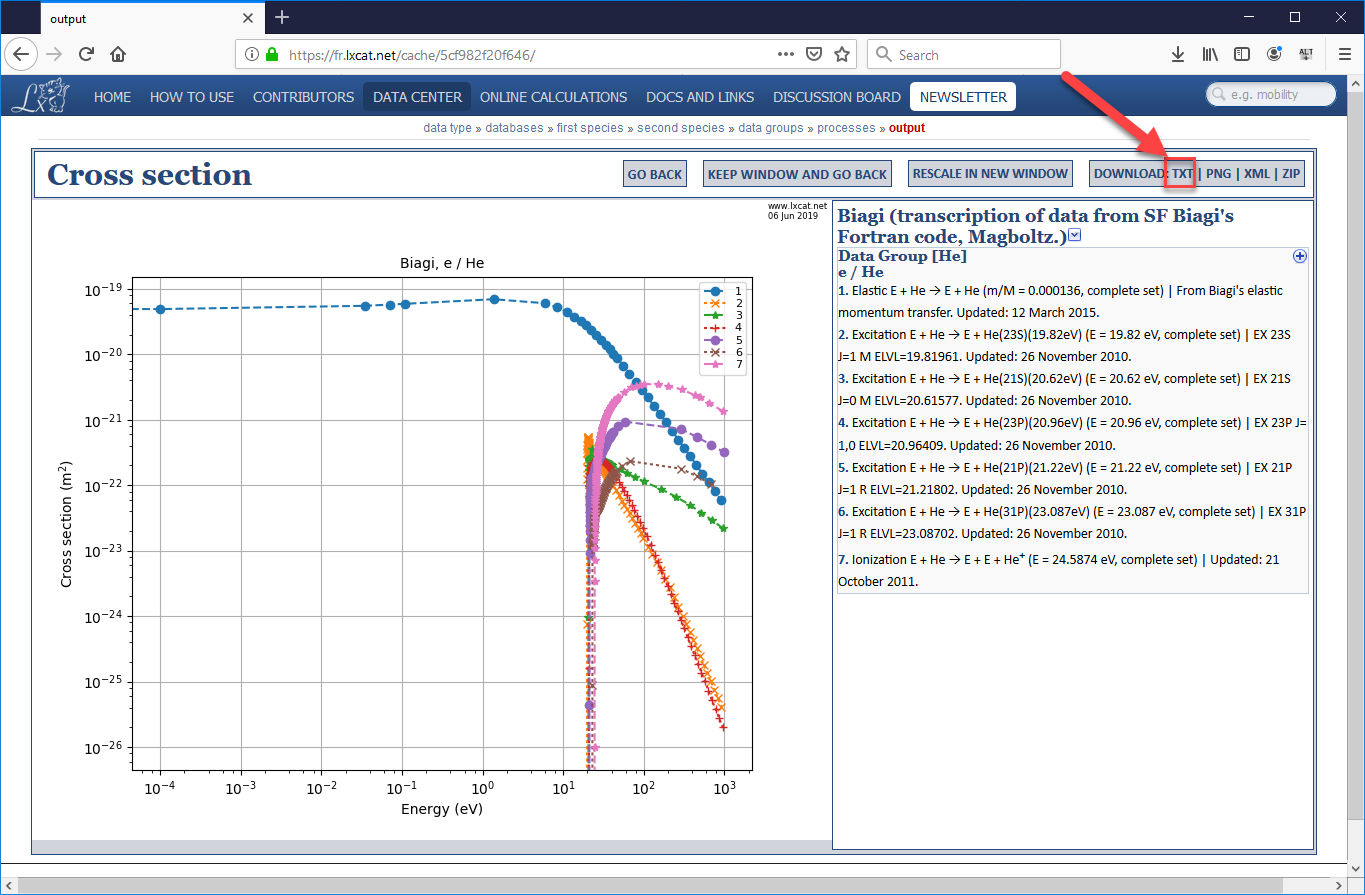
A new browser tab will open up. Scroll down past the headers to find the data. Notice that in the headers for each of the data sets, the units of each of the columns are given. This data happens to be in the correct units. Not all the cross-section data on the LXCat site is in eV and square meters.
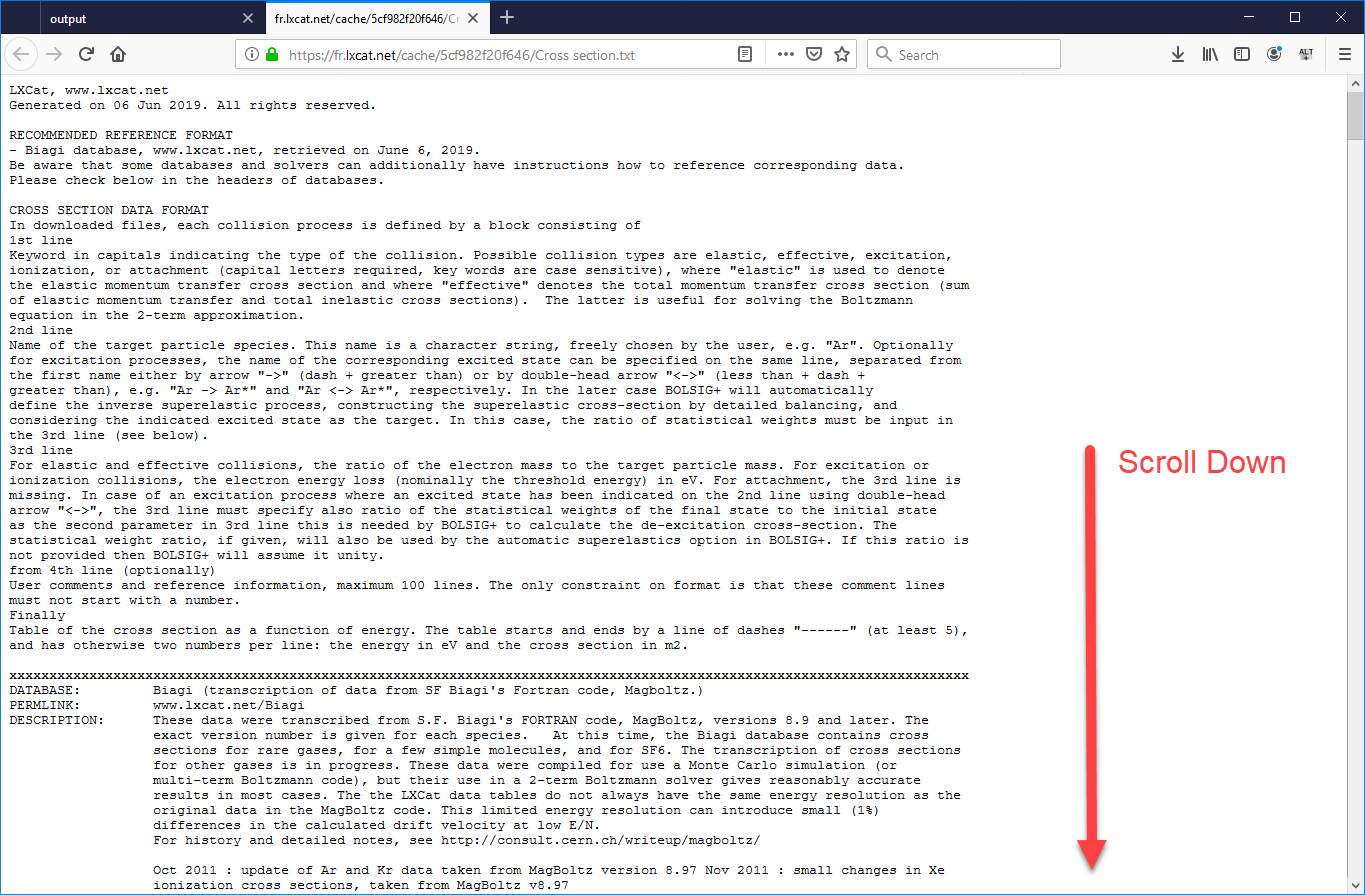
Highlight the data for one set, and copy it into a .dat file. Be sure to only select the data and no headers or other characters. The best way to create a .dat file is to copy the data into a .txt file, then change the .txt extension with .dat. This can be done in a Windows file browser.
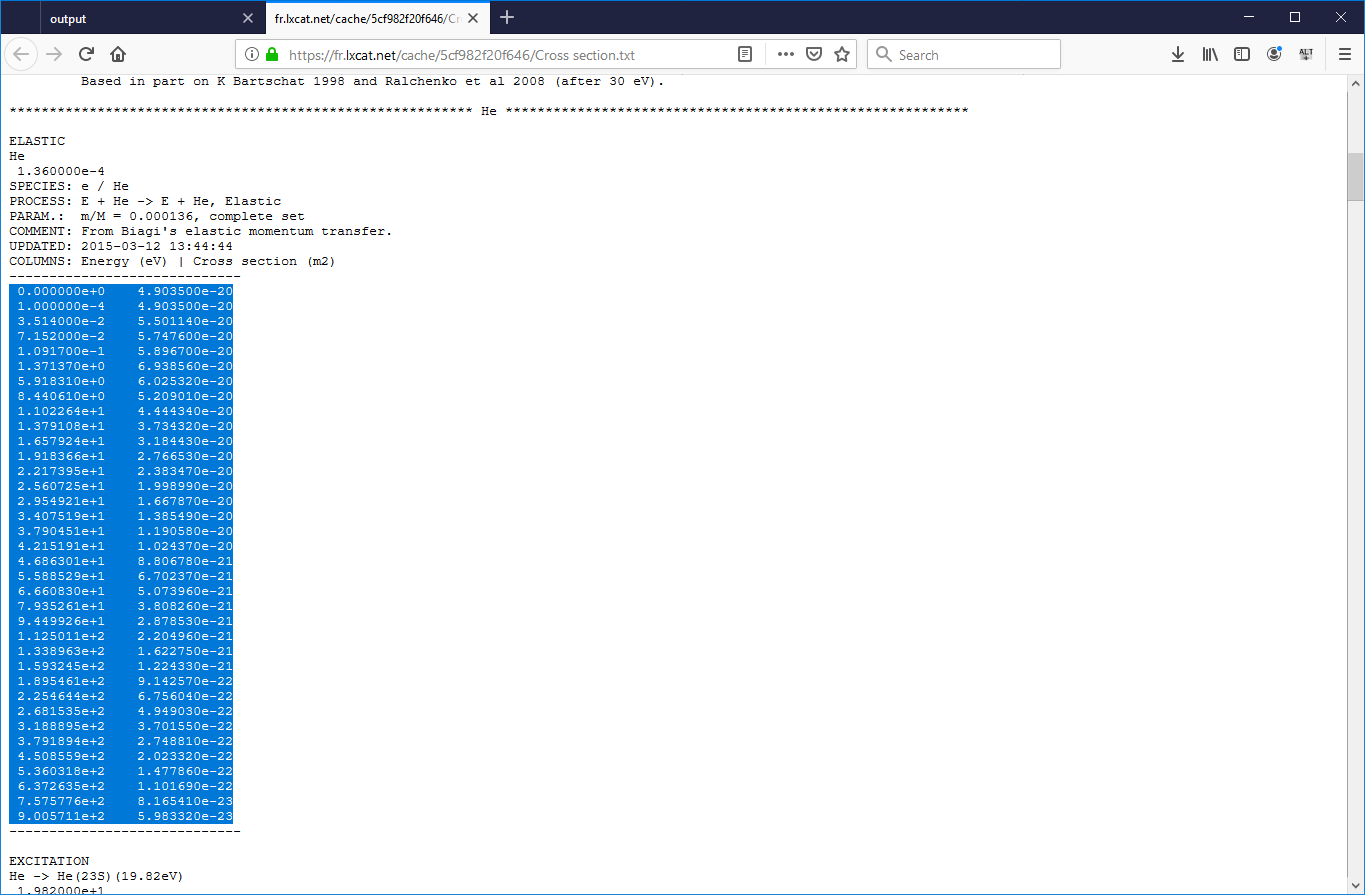
Each of the seven data sets will need to be copied into their own .dat file, with the appropriate name. The name will need to match the string in the
cross-section data filefield of the particle reaction that uses the data set. This is how to import cross-section into collision processes that use theReactionsframework. For use with older frameworks like the Monte Carlo or Impact Collider frameworks, consult the appropriate documentation.